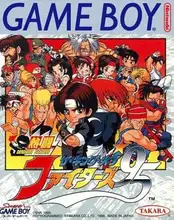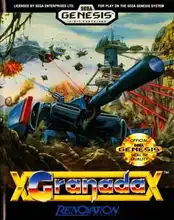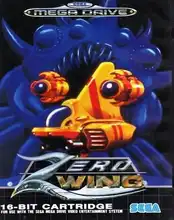Growing up in the era of chunky cartridges and Saturday morning cartoons often meant your world was a vibrant blend of pixelated adventures and hand-drawn heroes. For many of us, that included a healthy dose of anime. Before streaming services made everything instantly available, catching a new episode felt like a rare treat, much like finally beating that notoriously difficult boss in your favorite 16-bit game.
It was only natural that these two passions would collide. Developers in Japan, already steeped in both cultures, started bringing beloved anime series to consoles we knew and loved. The results were sometimes incredible, sometimes... well, let's just say interesting. But they were always a fascinating part of the retro gaming landscape.
The Two Worlds Collide: A Natural Fit
The connection between anime and video games runs deep, especially in the retro era. Both mediums often shared similar aesthetics, character archetypes, and storytelling techniques. Think about the dramatic poses, the over-the-top special moves, the sprawling sci-fi or fantasy worlds – it's a language both gamers and anime fans understood implicitly.
As consoles evolved from the NES to the Super Nintendo, Genesis, PlayStation, and Dreamcast, the ability to translate the dynamic visuals and sounds of anime into interactive experiences improved dramatically. Suddenly, you weren't just watching your heroes; you were controlling them, unleashing signature attacks, and reliving iconic moments from the shows.
Classic Consoles, Anime Vibes
While not every anime game from the 80s and 90s was a masterpiece, many offered genuinely fun experiences that tapped into the core appeal of their source material. These weren't just quick cash-ins; some were developed by studios known for quality, bringing their expertise to bear on popular franchises.
Consider the fighting game genre, a perfect match for the action-packed world of many shonen anime. On the Super Nintendo, gems like Shin Kido Senki Gundam Wing: Endless Duel or Dragon Ball Z: Hyper Dimension delivered fast-paced mech combat and energy blasts with impressive sprite work for the time. The Sega Genesis got in on the action too, with titles like Yu Yu Hakusho: Makyō Tōitsusen, offering unique multiplayer modes.
Beyond fighting, other genres saw anime adaptations:
- Action Sidescrollers: The TurboGrafx-16, a console with a dedicated fanbase, even hosted a City Hunter game that offered solid action without being overly punishing.
- Action-RPGs: Fans of fantasy epics might remember Record of Lodoss War: Advent of Cardice on the Dreamcast, blending dungeon crawling with the series' lore.
- Hack-and-Slash: The dark fantasy of Berserk found a home on the Dreamcast with Sword of the Berserk: Guts’ Rage, delivering satisfyingly brutal combat true to the manga/anime.
- Unique Takes: The PlayStation's Ghost in the Shell game stood out by letting you pilot the spider-tank Fuchikoma in a third-person shooter, a cool twist on the series' tech focus. Even visual novels like Neon Genesis Evangelion: Girlfriend of Steel found an audience, offering a different perspective on familiar characters.
These games weren't always front-page hits, but for fans who loved both the anime and the console they were released on, they were treasured discoveries.
When Games Became Anime
The crossover wasn't just one way! Some classic retro game franchises were popular enough to spawn their own anime adaptations. While sometimes obscure or short-lived, these OVAs (Original Video Animations) or series were a treat for fans.
Remember Konami's legendary shooters like Gradius and Salamander? Believe it or not, they got their own animated series in the late 80s. Seeing the ships, enemies, and worlds from those classic arcade and console titles brought to life in animation was a surreal and exciting experience for dedicated fans. It just goes to show how intertwined these worlds truly were back then.
Why We Love This Crossover
For retro gamers who also grew up watching anime, these games represent a perfect storm of nostalgia. They remind us of:
- Discovering new shows through word-of-mouth or late-night TV blocks.
- Mastering complex button inputs for special moves.
- The thrill of seeing characters you loved jump off the screen and into your controller.
- The unique art styles and sounds that defined both eras.
Playing a retro anime game today isn't just about the gameplay; it's about revisiting that specific time and feeling, when the lines between animation and interaction felt excitingly blurred.
Whether you were piloting a Gundam, unleashing a Spirit Gun, or just exploring a world based on your favorite series, the intersection of retro gaming and anime created some truly memorable moments in gaming history. Digging out one of these old cartridges or discs is a direct link back to that awesome era.
FAQ
Q: Were all retro anime games good? A: Honestly? No. Like any adaptations, quality varied wildly. Some were fantastic hidden gems, while others were rushed tie-ins. Part of the fun was discovering which ones delivered!
Q: What consoles had the most anime games in the retro era? A: Japanese consoles like the Super Famicom (SNES), PC Engine (TurboGrafx-16), PlayStation, and Dreamcast naturally had a larger library of anime-based games due to their market. However, many saw releases or ports in North America and Europe as well.
Q: Are any classic anime games available digitally today? A: Some retro anime-inspired games or even direct adaptations occasionally appear on digital storefronts like GOG or through console virtual libraries, but many remain tied to their original hardware or require emulation to play today.
Q: Did Western cartoons get retro game adaptations too? A: Absolutely! The retro era saw tons of games based on popular Western cartoons like Teenage Mutant Ninja Turtles, Batman: The Animated Series, and many Disney properties. Anime was just another major source of inspiration.



